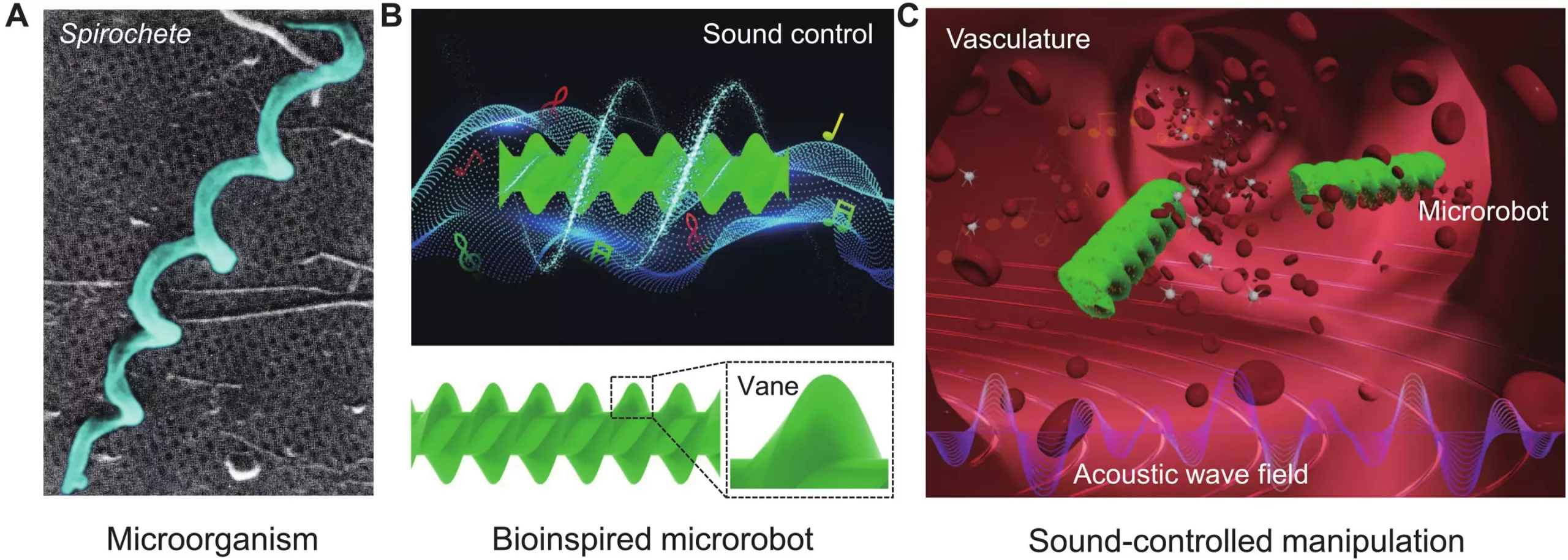In a significant development in the field of medical research, a team of robotic and acoustic engineers from the Institute of Robotics and Intelligent Systems, ETH Zurich, and Institut für Theoretische Physik, Center for Soft Nanoscience, Westfälische Wilhelms-Universität Münster, have successfully developed a microrobot that can be propelled through narrow tubes using sound waves. This breakthrough has the potential to revolutionize drug delivery within the body and significantly reduce the occurrence of undesired side-effects.
For many years, medical researchers have been searching for more targeted methods of drug delivery. The ability to send drugs specifically to the parts of the body that require treatment could enhance the efficacy of medications while minimizing harmful effects on healthy tissues. While previous attempts have explored the use of magnet-controlled robots, the precision control of such systems has posed challenges.
A Promising Alternative
The research team opted for an innovative approach by utilizing sound waves to propel a miniature robot. This technique holds promise for applications inside the human body, providing a more suitable and effective method for drug delivery. The underlying concept involves harnessing the energy within sound waves to propel a motorless robot.
The Design Process
To accomplish this, the team employed 3D printing technology to create a corkscrew-shaped structure using a non-toxic polymer. This corkscrew was then placed inside a glass tube filled with a liquid, such as water or alcohol. By directing sound waves towards the corkscrew, the researchers observed that the molecules in the liquid began to vibrate, resulting in the creation of a vortex. This vortex, in turn, propelled the robot forward.
Remarkably, the research team discovered that they could manipulate the speed and direction of the robot by modifying the features of the sound waves. By adjusting the frequencies of the sound waves, they were able to propel the robot upwards through a tube tilted at a 45-degree angle. These findings pave the way for more precise control and maneuverability of robotic systems inside the body.
Future Directions
The researchers are eager to further test their microrobot in tubes made of more flexible materials to closely resemble the conditions of human blood vessels. Simulating these intricate environments will provide crucial insights and expand the potential applications of this novel technology. Additionally, the team is currently developing an “acoustic helmet” that aims to enhance control over the robot, opening new possibilities for even greater precision and versatility.
The recent breakthrough in microrobot technology, propelling robots using sound waves through narrow tubes, represents a significant milestone in medical research. This approach offers a potential solution to the long-standing challenge of targeted and controlled drug delivery within the body. With further advancements and refinement, this technology holds immense promise for revolutionizing medical treatments and improving patient outcomes. The future of microrobotics is bright, driven by the ingenuity and collaborative efforts of interdisciplinary engineering teams.


Leave a Reply